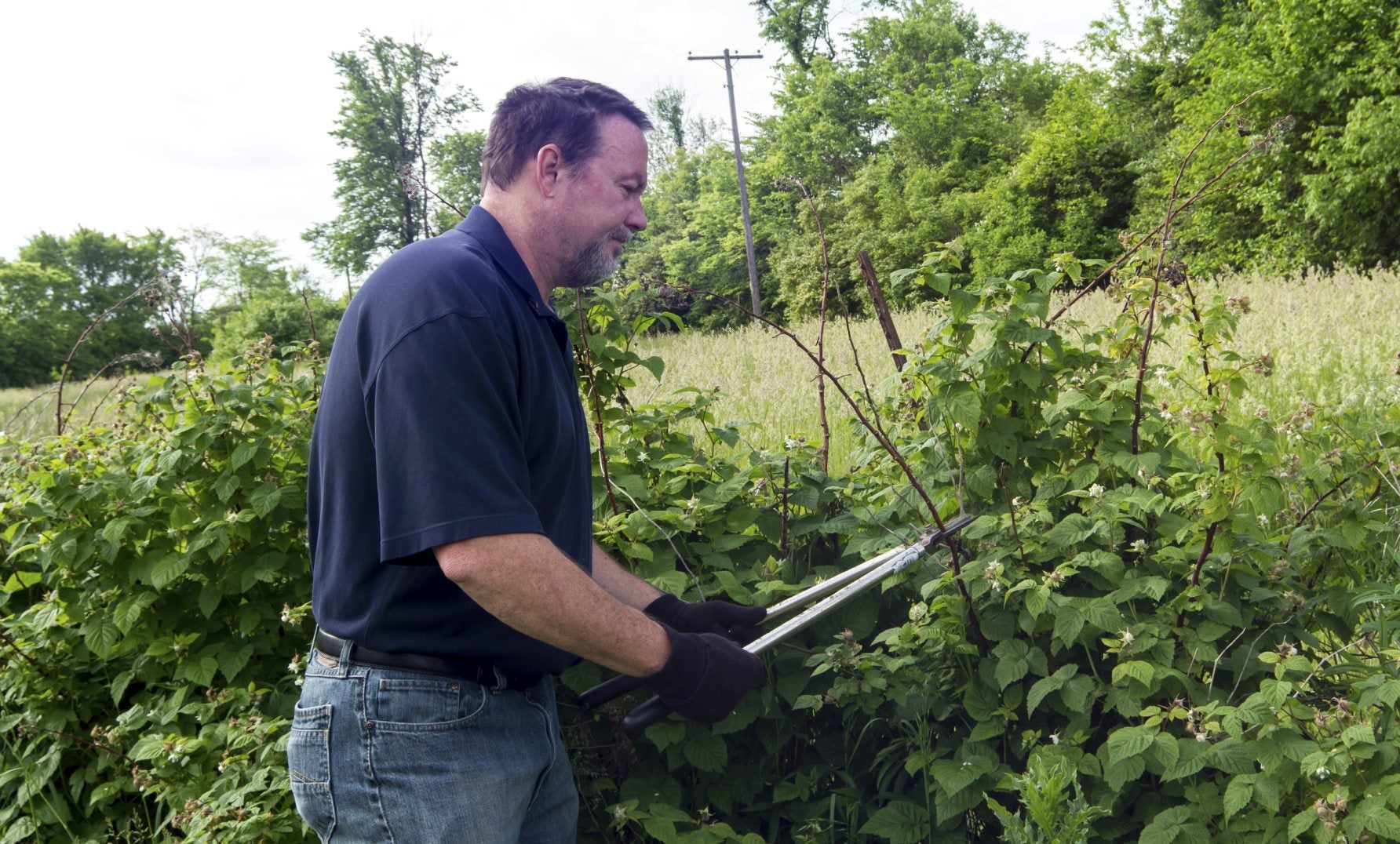Pruning Black Raspberry Bushes: How To Prune Black Raspberries

Black raspberries are a delicious and nutritious crop that can be trained and pruned to grow even in smaller gardening areas. If you’re new to black raspberry cultivation, you might be wondering, “When do I prune black raspberries back?” Fear not, pruning black raspberry bushes isn’t complicated. Keep reading to find out how to prune black raspberries.
When Do I Prune Black Raspberries?
In the first year of growth, leave the black raspberries alone. Do not prune them. In their second year, it’s time to start cutting back black raspberries. You will likely get a small harvest of berries in the late spring or early summer. After the plants quit fruiting, you will begin pruning the black raspberry bushes. Pruning at this juncture will set the plants up with healthy, productive canes and make for a more bountiful harvest. It will also make harvesting easier; and at this time, you can confine the bushes' size, so they don’t grow rampantly and take up too much space.
How to Prune Black Raspberries
So, the first time you prune will be in the early fall. Wear long pants and sleeves, gloves, and sturdy shoes to avoid getting stabbed by thorns. Using sharp pruning shears, cut the canes so they are at consistent heights of between 28 and 48 inches (61-122 cm.). The ideal height is 36 inches (91 cm.), but if you want the canes taller, leave them longer. This early fall pruning of black raspberries will signal to the plant to produce more side branches. You will be pruning the black raspberry bushes again in the spring, and quite severely. Once you are done cutting back the black raspberry bushes, they won’t look like bushes anymore. For spring pruning, wait until the plants are budding, but not leafing out. If the plant is leafing out, pruning could stunt its growth. The canes that produced berries the year before will be dead, so cut them down to the ground. Cut any other canes that have been damaged by the cold (they will be brown and brittle) down to the ground as well. Now you are going to thin the canes. There shouldn’t be any more than four to six canes per hill. Choose the four or six most vigorous canes and cut the rest out down to the ground. If the plants are still young, chances are they haven’t produced enough canes yet, so skip this step. Next, you need to work on the lateral or side branches where the berries develop. For each side branch, count eight to ten buds away from the cane and then cut the rest off at that point. You’re all done for the moment, but black raspberries should be topped two or three times during the next few months to facilitate lateral (fruiting) branches and to increase the strength of the cane, so it grows more erect. Prune the raspberries to 36 inches (91 cm.) in height at this time; this is called topping. Basically, you are pinching out or cutting off the shoot tips, which will encourage lateral growth and result in higher berry production. After July, the canes become weaker, and you can cease pruning until early fall again. For dormant pruning, remove all dead, damaged, and weak canes. Thin remaining canes to five to ten canes per plant. Lateral branches should be headed back 4 to 7 inches (10-18 cm.) for blacks or 6 to 10 inches (15-25 cm.) for purples. More vigorous plants can support longer lateral branches. All canes should be topped to 36 inches (91 cm.) if they were not topped earlier.
Gardening tips, videos, info and more delivered right to your inbox!
Sign up for the Gardening Know How newsletter today and receive a free copy of our e-book "How to Grow Delicious Tomatoes".

Amy Grant has been gardening for 30 years and writing for 15. A professional chef and caterer, Amy's area of expertise is culinary gardening.
-
 Zinnias On Repeat: 10 Glorious Cut-And-Come-Again Varieties For Endless Summer Bouquets
Zinnias On Repeat: 10 Glorious Cut-And-Come-Again Varieties For Endless Summer BouquetsThese zinnia varieties keep giving all summer, making them the perfect choice for dedicated cutting gardens – or just the occasional homegrown bouquet.
By Ellen Wells
-
 Create A Romantic Garden Straight Out Of Bridgerton: Regency Era Romance In Your Garden
Create A Romantic Garden Straight Out Of Bridgerton: Regency Era Romance In Your GardenTry some romantic garden ideas straight out of Bridgerton. Flowers and gardens in the Regency era were lush and charming and you can get the same look!
By Bonnie L. Grant